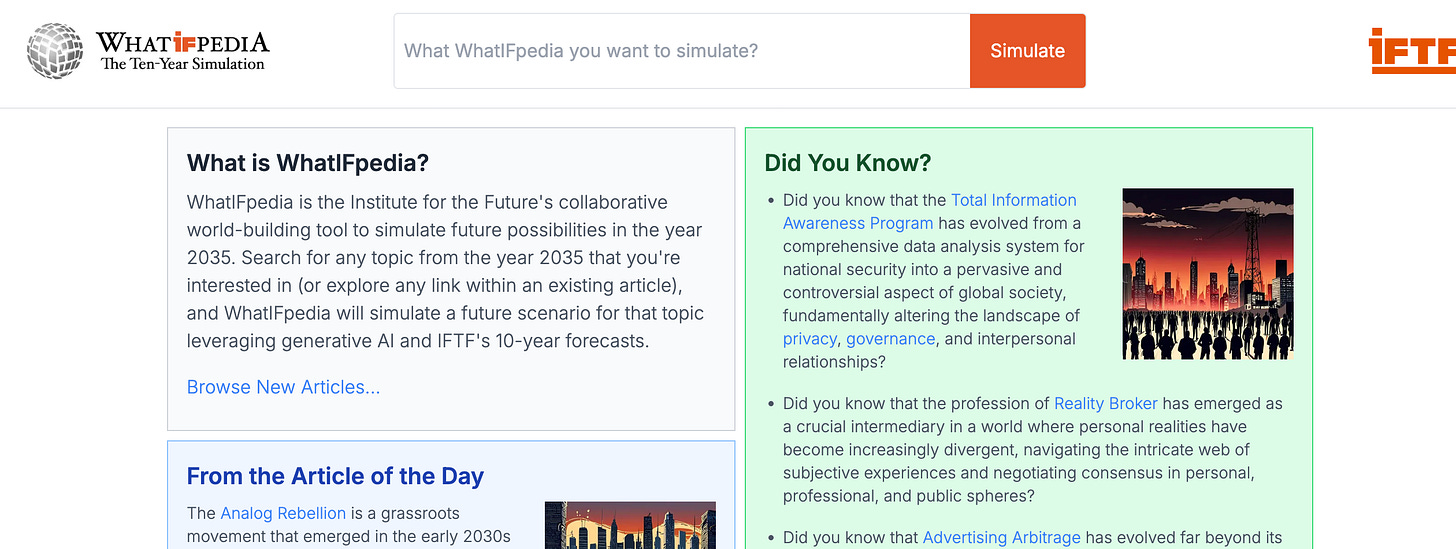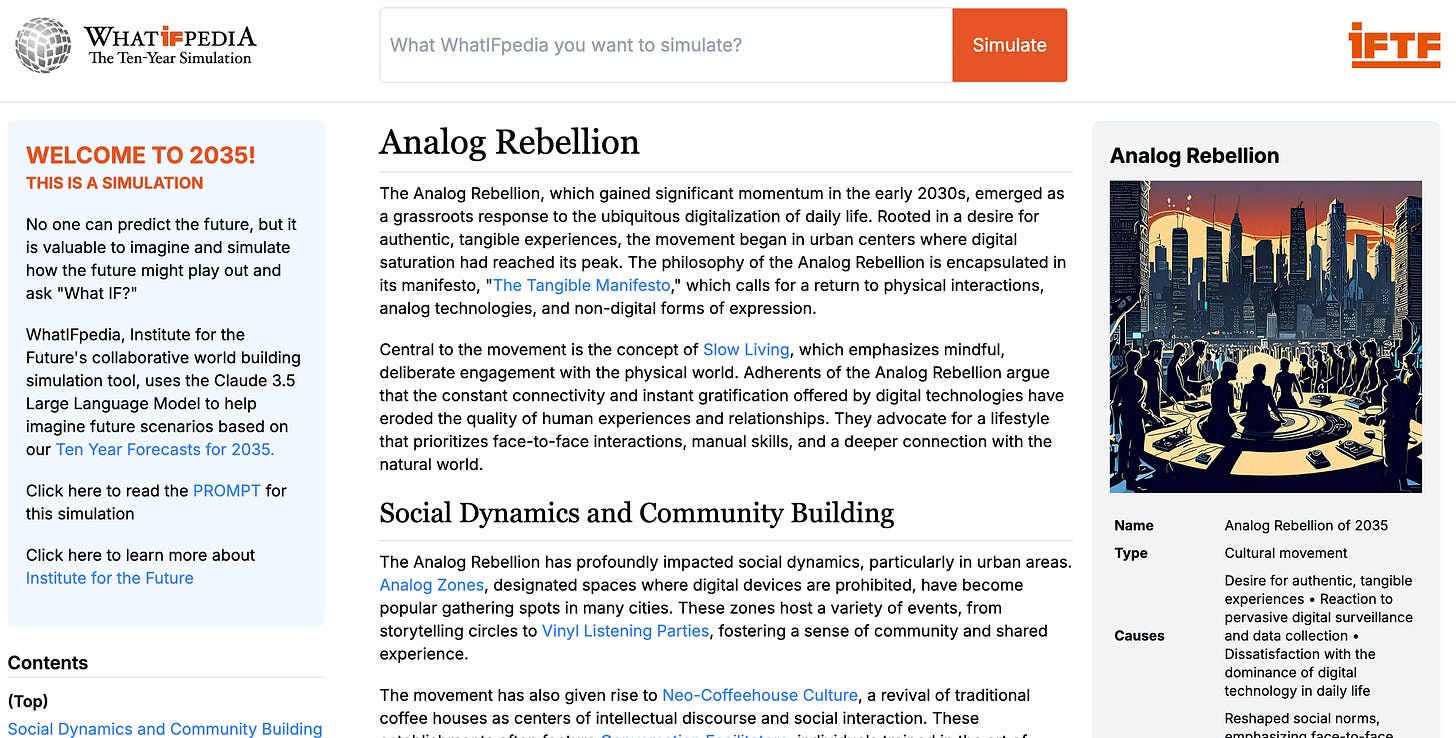Last year, we partnered with Institute for the Future to build WhatIFpedia, an experiment in collaborative ideation and storytelling with generative AI. Institute for the Future is a 57 year old think tank that helps organizations think about the future 10 years out and beyond, often in the form of “future forecasts” - detailed visions of possible futures. WhatIFpedia expands upon one such strategic forecast from their 2024 Ten Year Forecast program, enabling users to collaboratively explore and expand the scenarios of this future world. The platform maintains consistency across all generated content, ensuring each new contribution is consistent with what other users have previously generated. The platform doesn't simply answer questions about these forecasts; it facilitates the creation of interconnected narratives that elaborate on the original vision.
Many are working on using language models and generative AI systems to provide answers, but what they are better suited for is generating new ideas. WhatIFpedia explores their potential for idea generation, particularly in strategic foresight, where the goal extends beyond accurate responses to developing innovative concepts. WhatIFpedia also explores how content generation could be a collective and networked process, because every new scenario is building upon what has been generated before. While platforms like Claude and ChatGPT are remarkable tools, they primarily enable one-to-one experiences where the language model and person interact directly. WhatIFpedia goes beyond these individual interactions to enable collective exploration and development of ideas.
WhatIFpedia structures this collaboration through consistent storytelling. Because each article aligns with both the Institute for the Future's original forecasts and all previously generated content, the system largely creates a single, internally consistent “world.” Unlike systems designed for divergent storytelling or multiple choice paths, WhatIFpedia maintains narrative coherence across its expanding content.
WhatIFpedia explores a different mode of engagement from what users of chatbots are accustomed to. The platform transforms the underlying language model through its structural design. You can think of the language model as the engine, and WhatIFpedia as the chassis around it. Just as you can take a combustion engine and put one body around it to create a train, another body to make a car, another for a lawnmower, and yet another for a tractor, the implementation framework fundamentally shapes how the core technology functions. The engine itself remains crucial for building these vehicles, but for end users, the implementation structure defines their experience.
Strategic foresight provides the foundation for these interactions through qualitative ten-year forecasts. Organizations use these forecasts to envision possible futures, then work backwards to develop resilient and creative strategies for the present. Unlike traditional scenario planning, this backwards-planning approach enables more innovative strategies. With partners across the globe, this methodology has shaped strategic planning for organizations of all scales.
WhatIFpedia takes these static forecasts and expands them systematically into practical applications. The goal is not to answer questions about the forecast - in fact, you can't ask it questions or prompt it in the way you might typically interact with AI systems. Instead, it allows you to direct the ideas of the forecast to expand on them in a way where both the forecast, your curiosity, and the curiosity of the collective all shape the output.
WhatIFpedia is a concrete example of what we at Handshake creatively explore across projects: how can we make a static text come alive and dynamically resonate with the world. How is truth a process beyond a set of statements? In this particular case we use future-back thinking and scenario writing to expand an otherwise static forecast, but this methodology could extends to strategy reports, fiction, life planning, budgets, and educational materials in different ways.
The approach of expanding static texts into living, applied knowledge has deep historical precedents across many domains and cultures. In Islam, The Hadith represents an expansion of different ways in which the Quran applies to life. In Judaism, the Talmud offers a long-form expansion of how the Torah applies to different situations. In Design Thinking, interviews are interpreted through empathizing. Every organization and culture has different explicit and implicit patterns by which ideas are made, and how truth is sought… no one model or system will do all of them well. WhatIFpedia is one experiment in this direction.
The WhatIFpedia platform extends from an open-source project developed by Sawyer Hood. His original repo provided the concept first draft of the underlying structure. Sawyer has continued to create some of the most innovative, inspiring, and creative projects in the generative AI ecosystem. You should definitely follow him here or anywhere else you find him.
We’d love it if you tried out the platform at whatifpedia.org, shared it with whoever you think would find it interesting and let us know what you think!





